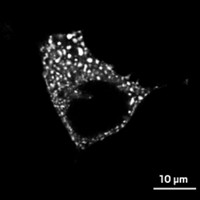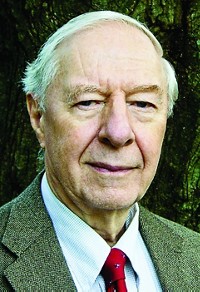Advertisement
Grab your lab coat. Let's get started
Welcome!
Welcome!
Create an account below to get 6 C&EN articles per month, receive newsletters and more - all free.
It seems this is your first time logging in online. Please enter the following information to continue.
As an ACS member you automatically get access to this site. All we need is few more details to create your reading experience.
Not you? Sign in with a different account.
Not you? Sign in with a different account.
ERROR 1
ERROR 1
ERROR 2
ERROR 2
ERROR 2
ERROR 2
ERROR 2
Password and Confirm password must match.
If you have an ACS member number, please enter it here so we can link this account to your membership. (optional)
ERROR 2
ACS values your privacy. By submitting your information, you are gaining access to C&EN and subscribing to our weekly newsletter. We use the information you provide to make your reading experience better, and we will never sell your data to third party members.
Physical Chemistry
Theoretical Framework To Explain Effects Of Aqueous Ions On Proteins Remains Elusive
After decades of study, researchers struggle to explain the ordering of aqueous ion effects on proteins
by Elizabeth K. Wilson
July 16, 2012
| A version of this story appeared in
Volume 90, Issue 29

For Jifeng Zhang, research adviser for bioproduct pharmaceutical development at Eli Lilly & Co., the solvation of ions in water has decidedly practical implications.

The topic may appear arcane and academic, yet the behavior of aqueous ions has profound effects on biological molecules such as proteins and DNA and, thus, implications for health and disease.
For example, Zhang says, patients with inflammatory disease may receive a solution of monoclonal antibodies. The treatment, dispensed in mass-produced, prefilled syringes, needs to have a two-year shelf life. The ions added in the form of salts or buffer reagents to the protein solution are crucial for maintaining protein stability. Different ions are better or worse at preventing aggregation and self-association.
Researchers have no good way to predict this behavior.
At the core of the problem lies a phenomenon discovered in the late 1800s by the Czech chemist Franz Hofmeister. He discovered that certain aqueous ions follow a peculiar order in their increasing or decreasing ability to precipitate egg whites in solution. Anions in particular, such as SO42–, Cl–, and SCN–, follow a seemingly arbitrary sequence: In this order, they increasingly can denature and dissolve proteins, and have increasing or decreasing effects on many other solution properties, such as surface tension.
This so-called Hofmeister effect lay relatively unexplored for decades, until the past 15 years, when experimental and computational methods allowed chemists to reexamine the possible sources of the effect. Since then, the Hofmeister effect has formed the subject of hundreds of papers, with scientists devising increasingly intricate and diverse experiments, with sophisticated theoretical explanations. Numerous meetings now focus on the topic, including conferences this summer hosted by the Telluride Science Research Center and the Royal Society of Chemistry.
Scientists are making some progress in understanding the mechanisms behind the mysterious Hofmeister order, but consensus is lacking. Some say that relying on an immutable Hofmeister effect may not even be the right way to think about the problem. Changes in pH or salt concentration, they point out, can cause the series to reverse and the strength of the ions’ dissolving abilities to follow an opposite trend from the original Hofmeister series. Such unpredictability means chemists like Zhang still have a great deal of work cut out for them.
“How ions in water behave is still a mystery,” Zhang says.
The explanation set forth for decades was that ions produced long-range effects on the structure of water, leading to changes in water’s ability to let proteins fall out of, or stay dissolved in, a solution. That idea has largely been discarded.
The current view, explains M. Thomas Record Jr., chemistry and biochemistry professor at the University of Wisconsin, Madison, is that Hofmeister effects stem largely from the varying abilities of different salt ions to replace water at nonpolar molecular or macroscopic surfaces. But no theoretical framework can yet predict these actions.
Much recent Hofmeister work has focused on the behavior of ions at interfaces: between air and water, oil and water, or protein and water. Some scientists reason that experiments exploring ion behavior at air-water interfaces could eventually shed light on all interfaces, leading to a general mechanism.
For example, University of California, Berkeley, chemistry professor Richard J. Saykally performed what he calls “excruciatingly hard” spectroscopic experiments on the behavior of thiocyanate ions in water. Combined with theoretical studies from Saykally’s UC Berkeley colleague, chemistry professor Phillip J. Geissler, the research showed that weakly hydrated ions are driven to the surface, where they then smooth surface roughness (Proc. Nat. Acad. Sci., DOI: 10.1073/pnas.1116169109). This complicated combination of events causes the ions’ properties to follow the Hofmeister series.
Other researchers focus on ions’ interactions with biomolecules, and they come to other conclusions.
Paul S. Cremer, a chemistry professor at Texas A&M University, believes the abilities of ions to affect surface tension, protein solubility, and other phenomena arise from different physical causes, rather than a single mechanism. His group recently studied the binding of anions such as SCN–, I–, SO42–, and Cl– to an elastin-like polypeptide. Using modeling results from Pavel Jungwirth, a chemistry professor at the Academy of Sciences of the Czech Republic in Prague, the group determined that the SCN– and I– ions interacted strongly with a site consisting of the backbone’s amide nitrogen and the adjacent α-carbon. The ions’ binding strength followed the Hofmeister series (J. Am. Chem. Soc., DOI: 10.1021/ja301297g).
However, Cremer notes, this simple picture will become significantly more complicated when ions encounter full-sized proteins’ many polar and charged side chains.
Barry W. Ninham, an emeritus chemistry professor at Australian National University, in Canberra, who has spent a large part of his career exploring the Hofmeister effect, maintains that the complexities are daunting (Chem. Rev., DOI: 10.1021/cr200271j). Numerous factors that influence the properties of aqueous ions, he says, have only recently been recognized.
“Hofmeister is something that’s rediscovered every 10 years,” Ninham says. “Then interest in it subsides when people realize it’s a sisyphean task.”
For example, he notes, scientists have yet to factor into their biomolecular models dissolved gases common in biological systems such as oxygen and nitrogen and their potentially significant effects on protein behavior.
Those who hope for a unifying theory of Hofmeister may ultimately be disappointed, Cremer predicts: “The chemistry is rich and interesting, but Hofmeister has no single holy grail.”




Join the conversation
Contact the reporter
Submit a Letter to the Editor for publication
Engage with us on Twitter